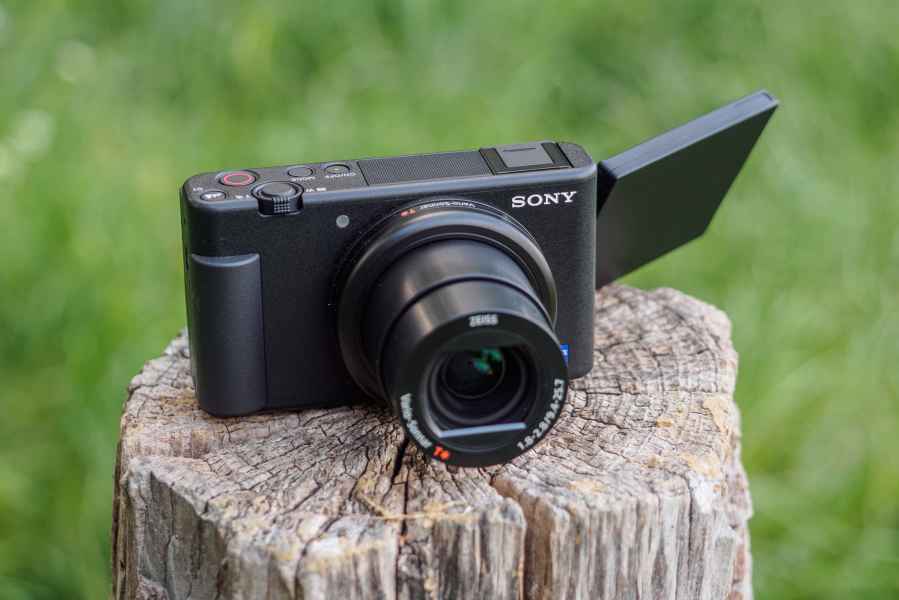Amateur Photographer verdict
Sony has made a really interesting little camera with the ZV-1 that takes RX100-series technology and gives it a video-centric twist.- Pocketable body
- Good image quality
- Fully articulated screen
- Clever new vlogging features
- No viewfinder option
- Frustrating controls
- Minimal touchscreen functionality
At a glance:
- 20MP CMOS sensor
- ZEISS 24-70mm-Equiv. f/1.8-2.8 lens
- UHD 4K 30p Video
- 3inch flip out touchscreen
- Price: $749 / £419
Ever since Sony introduced its original RX100 in 2012, the firm has tended to refine its premium enthusiast-focused compact camera on an annual basis. But, with six variants of the Sony RX100 on the market ranging from £330 to £1200, it decided to do something different. The Sony ZV-1 repackaged the technology from the RX100 line into a distinctly different design that’s optimised for vloggers producing videos for YouTube.
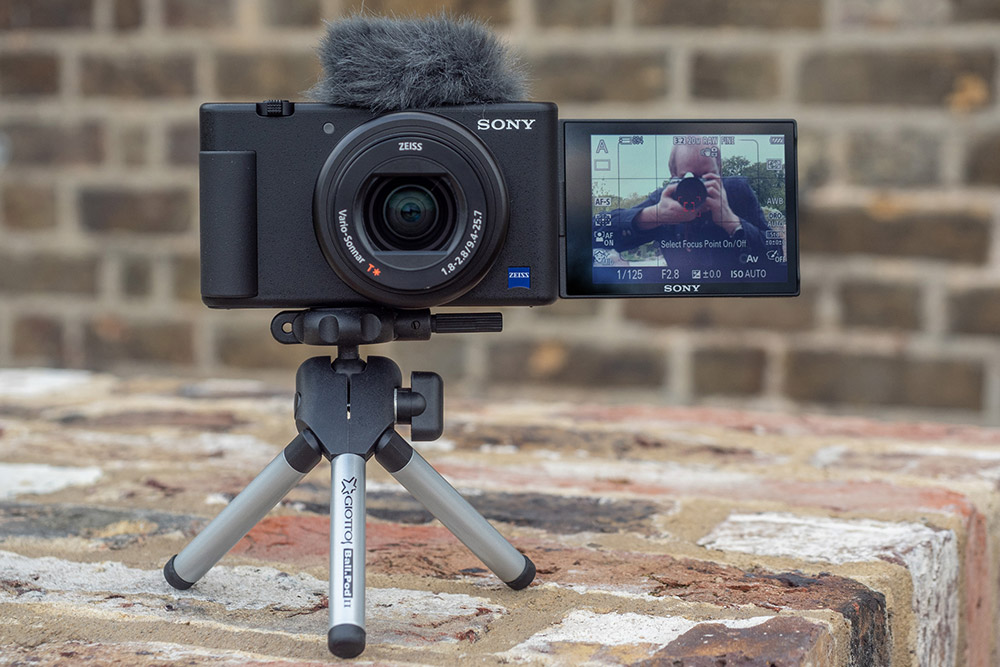
Along the way, the firm has also introduced several new features specifically designed for the job. So what does this mean, and is the ZV-1 also a viable option for photographers who predominantly shoot still images?
Sony ZV-1: Features
At first glance, the ZV-1 looks like just another a run-of-the-mill pocket compact camera. However, a second look reveals some striking new design features. On the top plate there’s an unusually large microphone grille, beneath which are found three capsules rather than two, an approach similar to that used by high-end audio recorders to achieve higher quality sound.
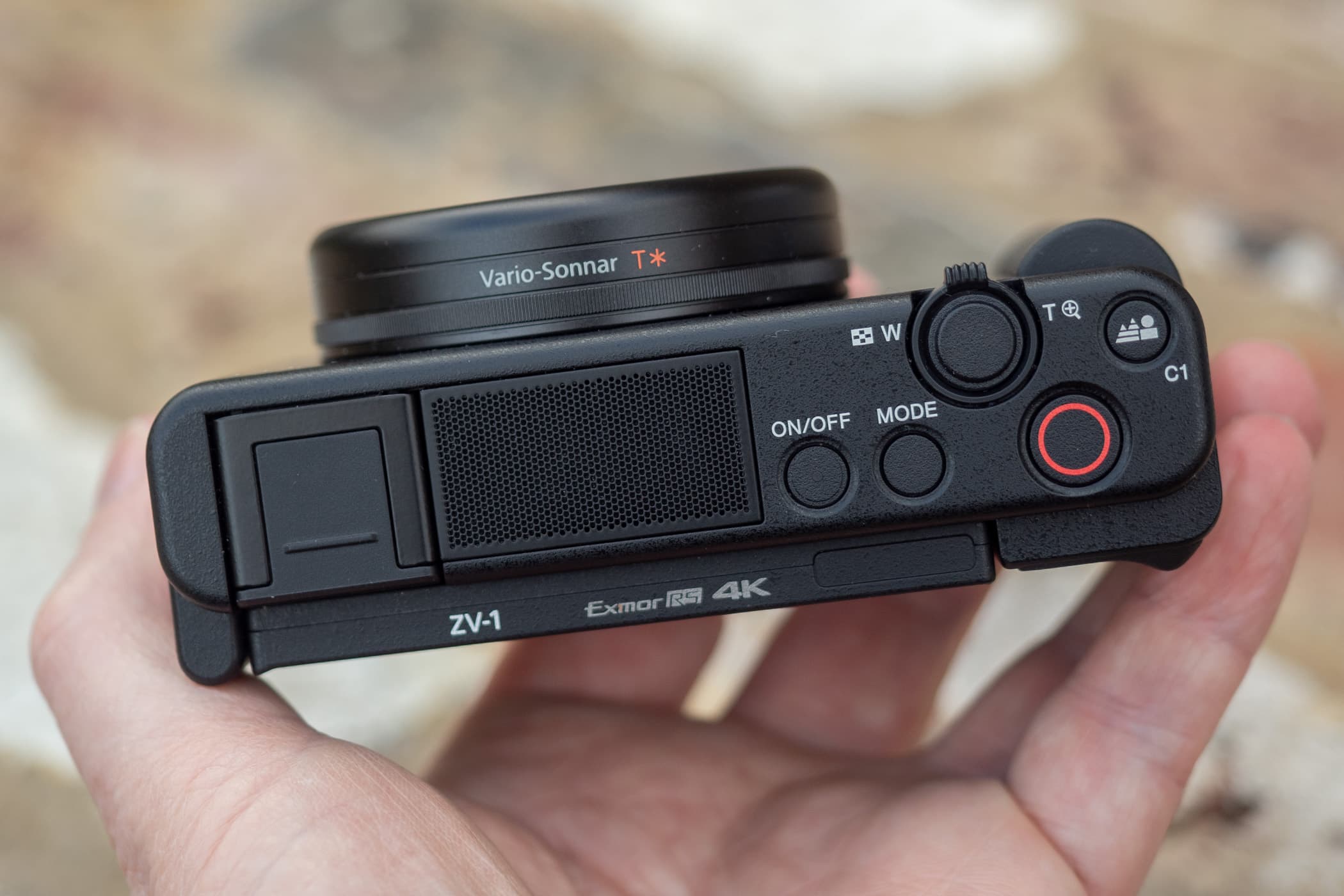
Beside it is a hot shoe (or multi-interface shoe in Sony speak) that’s primarily intended to take an add-on microphone such as the optional XYST1M (£142), or alternatively the furry windshield for the integrated mic that’s included in the box. To make space for these, the ZV-1 lacks either an electronic viewfinder or a built-in flash. Unfortunately, unlike the old, discontinued Sony RX100 II, its multi-interface shoe is incompatible with the FDA-EV1MK viewfinder (I couldn’t get it to fire a third-party flash, either).

Another significant change is found at the back, where Sony has used a side-hinged fully articulated screen instead of a tilt-only unit. It adds little to the camera’s size: in fact at 105.5 x 60 x 43.5mm, the ZV-1 is just 4mm wider and 2.5mm thicker than the similarly-spec’d Sony RX100 V. This new screen design allows an external microphone can be mounted on the hot shoe, without blocking the screen when it’s set to face forwards for vlogging.

A 3.5mm stereo mic input is found on the camera’s side, along with an HDMI output and a micro USB port that can be used to power the camera for extended recording times, as well as charge the battery. There’s no option to connect headphones to monitor your sound during movie recording, though.
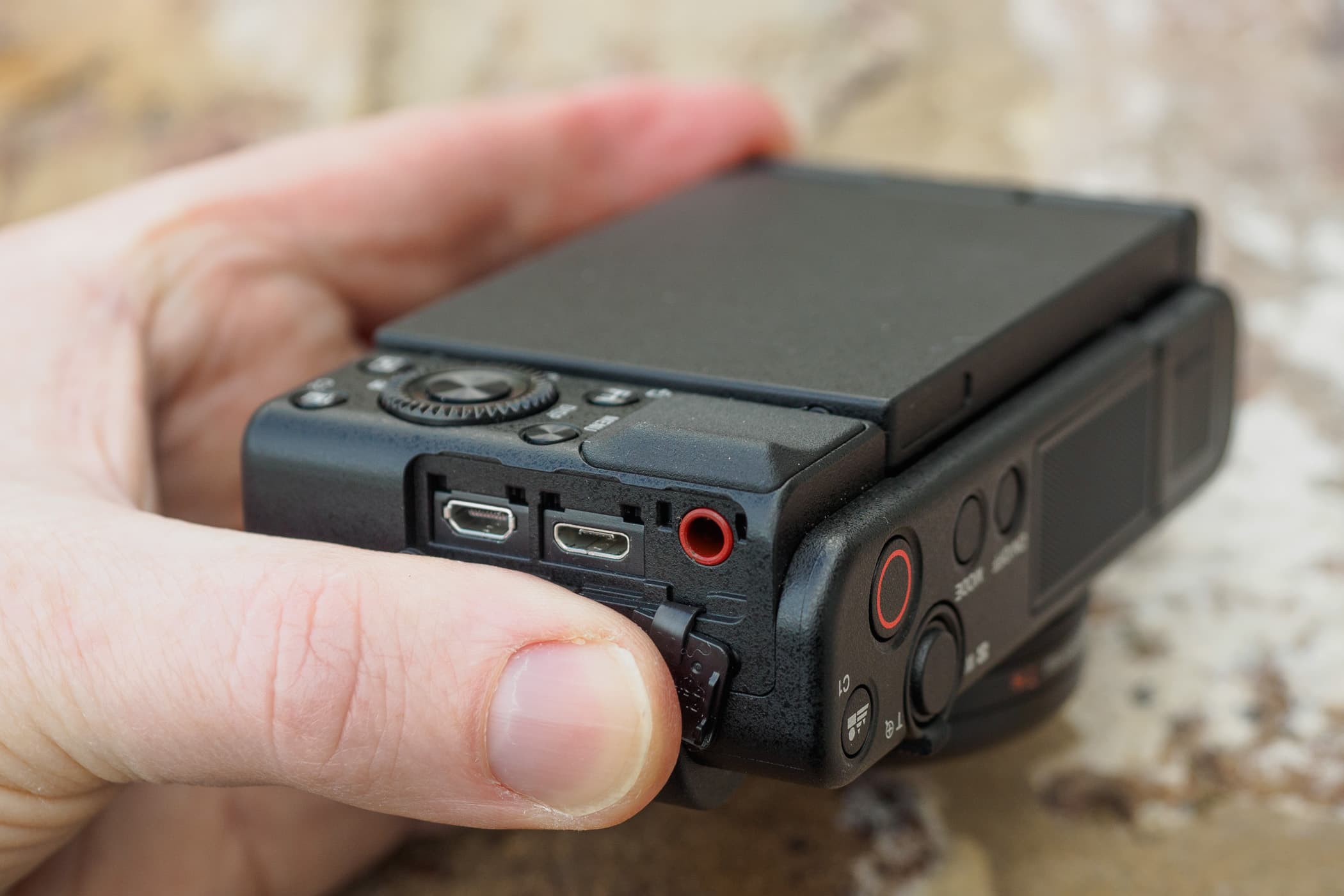
A couple of new vlogger-friendly functions have been added, too. The top-plate C1 button activates a Background Defocus mode, which toggles between shooting with the aperture wide open to give a blurred background and at f/5.6 for extended depth of field. There’s also a cryptically named Product Showcase mode, which is designed to shift focus onto an item when the presenter holds it out and shows it to the camera – apparently something of a signature YouTube pose.

For those who record footage while on the move, uprated SteadyShot Active image stabilisation combines optical and electronic corrections, and is claimed to be 8x more effective than Sony’s standard offering during 4K recording, and 11x with Full HD. Meanwhile face priority autoexposure during video recording is designed to seamlessly compensate for extreme changes in brightness when the subject moves between light and shade.

In terms of shooting stills, the ZV-1 has a lot in common with the RX100 range. It employs a 20.1MP 1in sensor closely related to that in the Sony RX100 VII, which provides a standard sensitivity range of ISO 125-12,800 along with extended settings down to ISO 64. It’s possible to shoot at 24 frames per second with autofocus tracking, and with a 172-shot JPEG buffer. The sensor features 315 phase-detection points covering all but the left and right edges of the frame, and Sony’s latest autofocus technologies are on board, including Real-Time Eye AF and Real-Time Tracking.
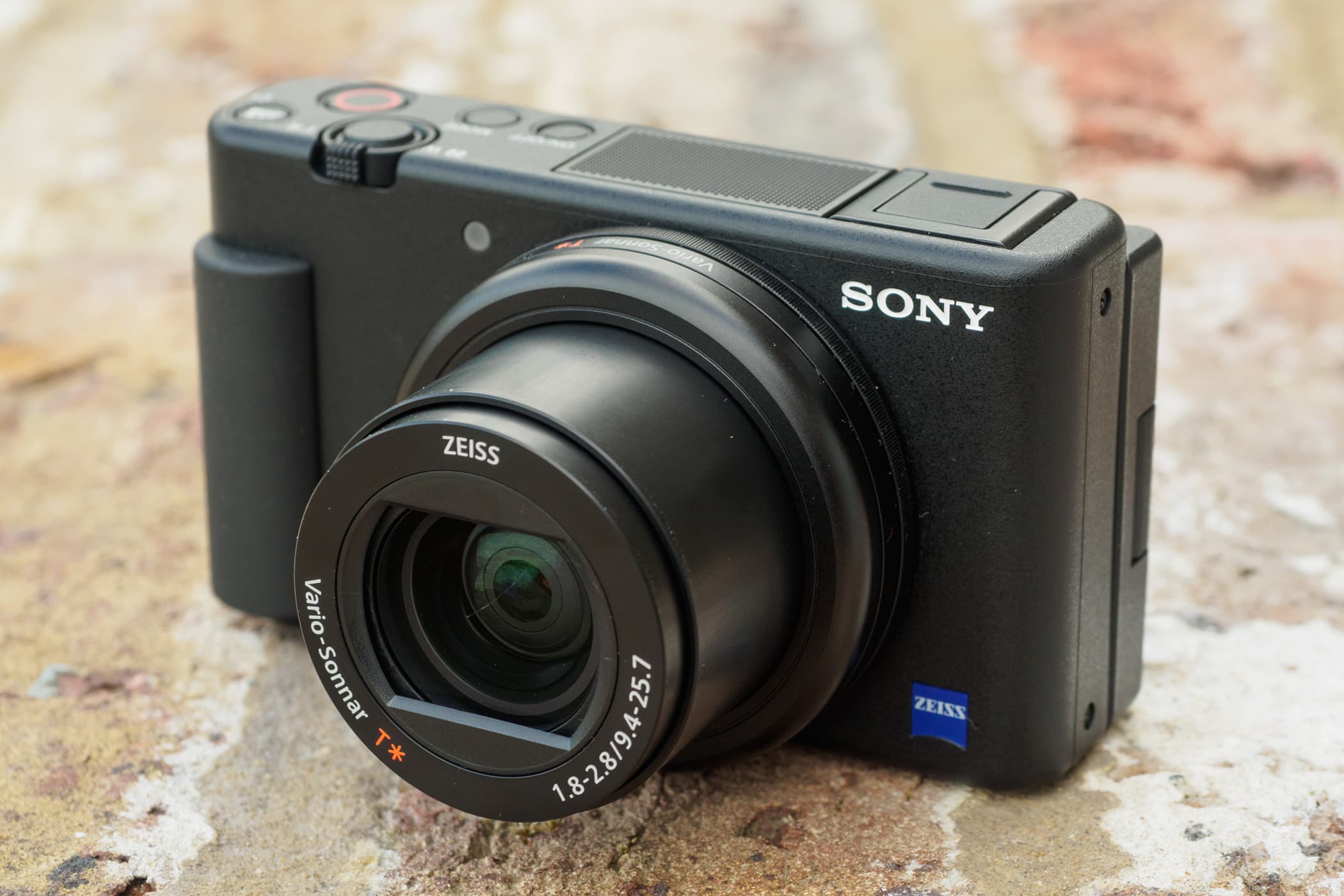
The 25-70mm equivalent f/1.8-2.8 lens is similar to that used by the RX100 V, just with a slightly narrower view at wideangle. It includes a built-in switchable 3-stop neutral density filter, allowing large apertures to be used in bright light. This can be set to engage automatically when it’s needed to balance the exposure in the stills modes, but it has to be selected manually for video (for no obvious reason).
Sony ZV-1: Build and handling
The ZV-1 is designed for people who currently use a smartphone to create their videos, and Sony wants it to appeal to those who aren’t interested in learning the technical niceties of either videography or photography. This has presented the firm with a golden opportunity to build a new touchscreen interface offering intuitive, results-driven operation, similar to those offered by its leading competitors, but which its cameras have until now sorely lacked. Unfortunately, it has chosen not to do so, which means that the ZV-1 has ended up a less approachable version of the RX100. This is not a good thing.

Sony has simplified the physical controls, which means the camera lacks a lens dial for changing settings and an exposure-mode dial (which is replaced by a top-plate button). To reinforce its focus on video, it sports a large record button the same size as the shutter release, and conveniently positioned on the top plate. A red LED on the front indicates when it’s recording, which is genuinely helpful.
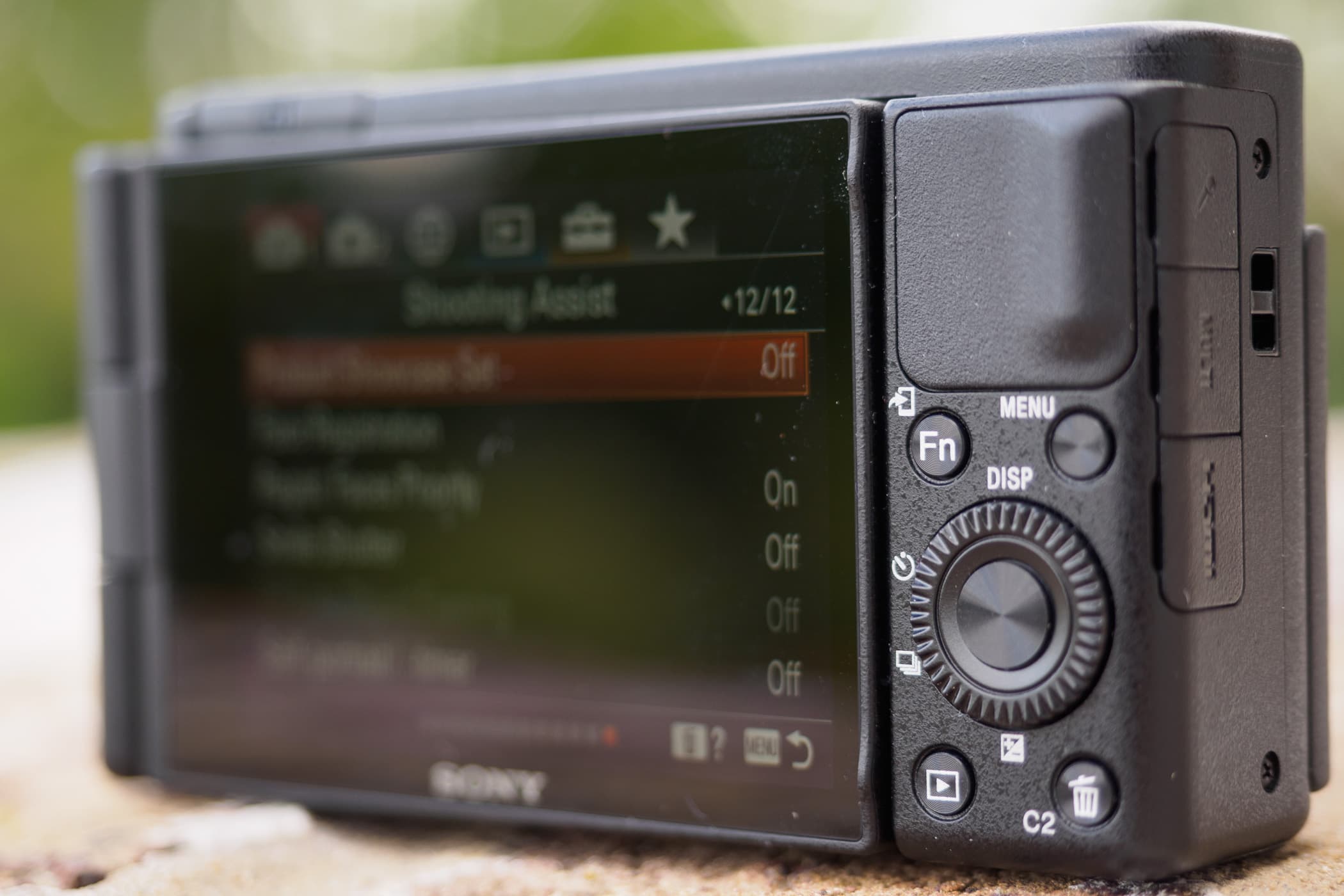
Most of your interaction with the camera comes via the dense cluster of rear controls, and primarily the combined d-pad/dial. Sony has included a touchscreen, but it barely does anything. As a result, an awful lot of button pressing is required to access and change settings. This means that the ZV-1 works OK as a point-and-shoot, but rapidly becomes awkward if want to change settings on a regular basis, particularly when compared to its closest competitor, the Canon PowerShot G7 X Mark III. This is unfortunate, as Sony has thrown a lot of advanced features on board, but made them overly difficult to access.
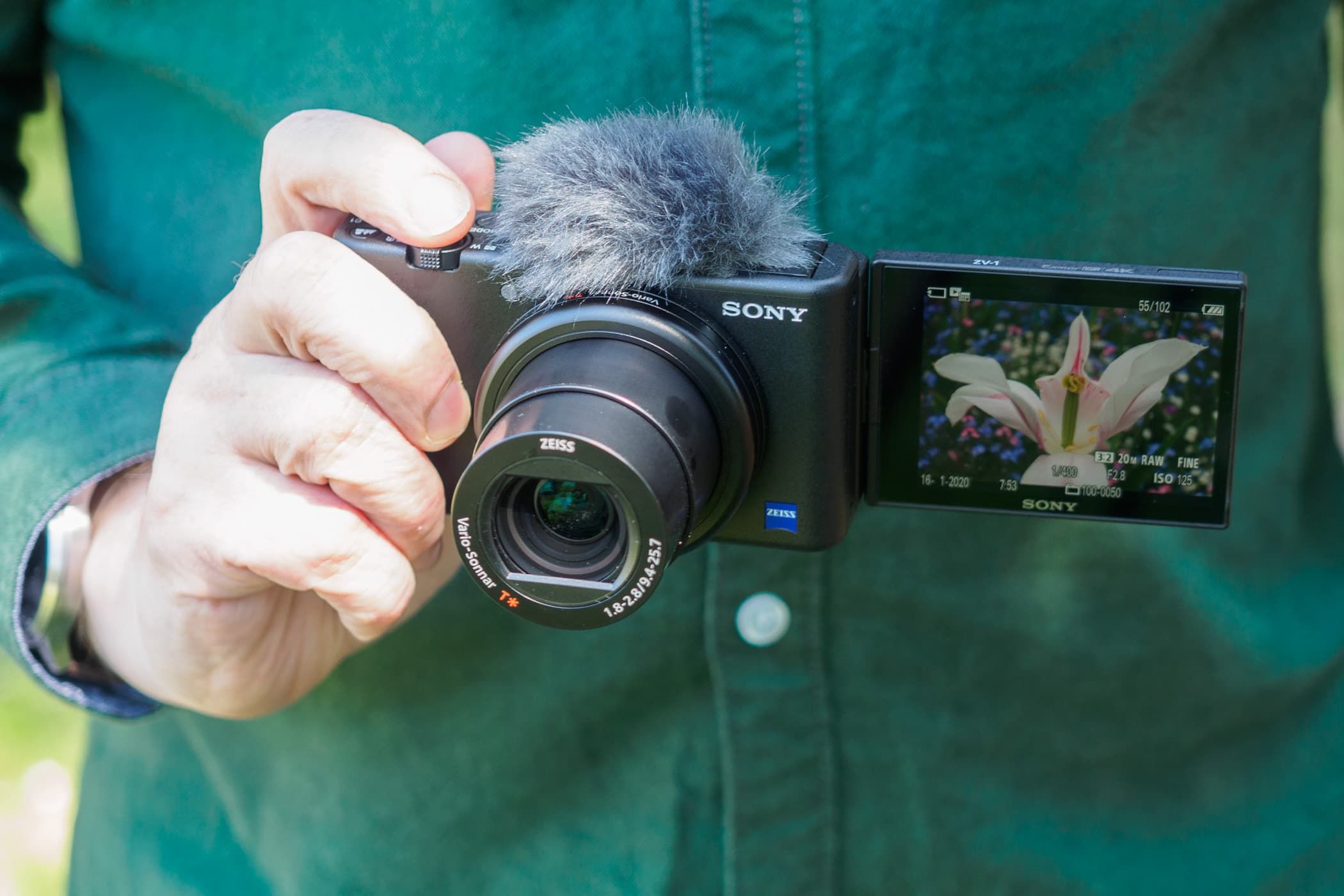
One very welcome design change, however, is the addition of a small rubber finger grip on the front. It gives a reassuringly secure hold, not only when using the camera conventionally, but also when pointing it towards you in selfie mode. This counts as a huge improvement on the smooth, flat bodies of the RX100 series.
Sony ZV-1: Performance
Once you start shooting with the ZV-1, it quickly becomes clear this is a camera better suited to video, rather than stills. In fact, it is a very capable little video camera. It records impressively detailed footage in both 4K and Full HD, with generally well-judged exposure and white balance. Sony’s remarkable autofocus really comes into its own, too, keeping the subject sharp no matter how they move relative to the camera. The uprated SteadyShot Active stabilisation does a great job of keeping footage watchable when it’s recorded on the move, while face priority AE effectively prevents your subject from disappearing into the shadows or being blown out by bright sunlight.

Sound quality is also impressive, with the built-in microphone being a cut above those found in other small compacts. It gives impressive depth and clarity to speech, but is also excellent at picking up environmental sounds, such as birdsong. Sony has done a good job of keeping the camera’s operational noise to a minimum, although the built-in mic can sometimes pick up the zoom motor in a quiet room. The supplied windshield does its job effectively, although it completely obscures the power button, which then becomes oddly easy to confuse with the identically sized mode button alongside.

As for those new vlogging features, the Background Defocus button does its job, with the caveat that the ZV-1’s small lens isn’t necessarily going to deliver that much background blur even at maximum aperture. The Product Showcase mode works well too, but with one significant catch, as for some reason it disables image stabilisation. So, if you forget to disable it when recording hand-held footage, it’ll turn out shaky. Unfortunately, the camera doesn’t really warn you of this: it instructs you to use a tripod when you enable the feature, but without explaining why. Also, the tiny on-screen icon indicating that it’s active only appears in the most cluttered of the five available display modes.

When it comes to stills photography, the ZV-1 offers more or less the same capability as the RX100 V. But there are a couple of reasons why you might choose it ahead of its sibling. Firstly, the addition of Real Time Eye AF nicely complements the large-aperture lens when taking pictures of people. On the RX100 series, it’s currently only found on the mark VII, which sports a longer, but slower 24-200mm equivalent f/2.8-4.5 lens.

Secondly, the screen’s extra flexibility means you can use it to compose low-level or overhead shots in portrait format as well as landscape. Crucially, I find this type of screen works much better on a small compact compared to larger, heavier cameras, as you can use your left hand to manipulate the screen and support the camera while you’re shooting. I’d love to see Sony add one to the next RX100 generation.
Sony ZV-1: Verdict
With the ZV-1, Sony has made an interesting little camera that takes RX100-series technology and gives it a video-centric twist. Its new vlogging features generally work well and appear cleverly targeted to its intended audience. But the flip side is that while it’s perfectly capable of taking excellent stills, it’s not a great choice for users who like to tinker with their settings on a shot-by-shot basis, or compose their images using an eye-level viewfinder.
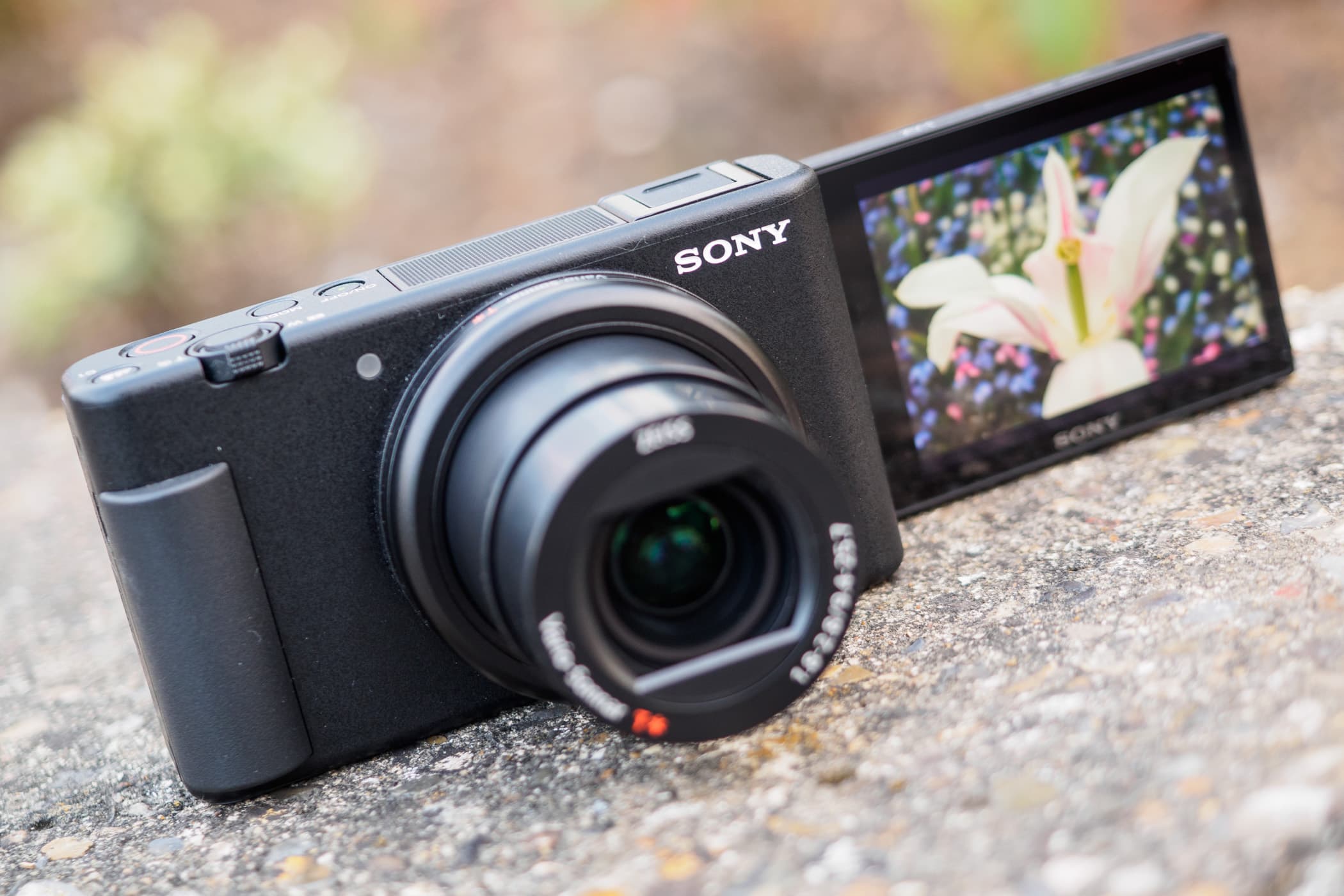
However, if there’s one feature that might tempt serious photographers, it’s the rare delight of getting a fully articulated screen on a pocket camera, which I’ve really enjoyed using. This is something you’ll only find elsewhere on the Canon G5 X and G1 X Mark III, whose larger SLR-styled bodies really stretch the definition of ‘pocketable’.

To me this highlights a gap in the current advanced compact-camera market, although sadly, one that the ZV-1 isn’t especially well equipped to fill. So, while it may well prove popular with vloggers, an RX100 model would probably be the better choice for most photographers.
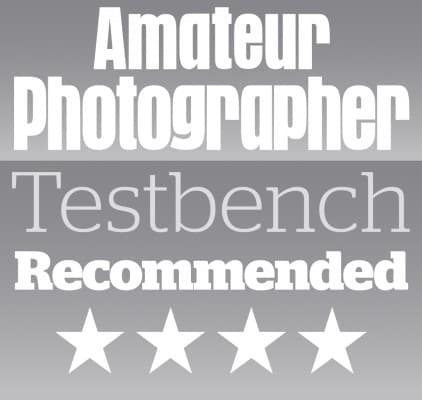
Related reading:
- Sony ZV-1 Mark II review – all-rounder with limitations
- Sony ZV-E10 II First Look Review – Sony’s vlogging camera grows up
- Best used travel zoom cameras

